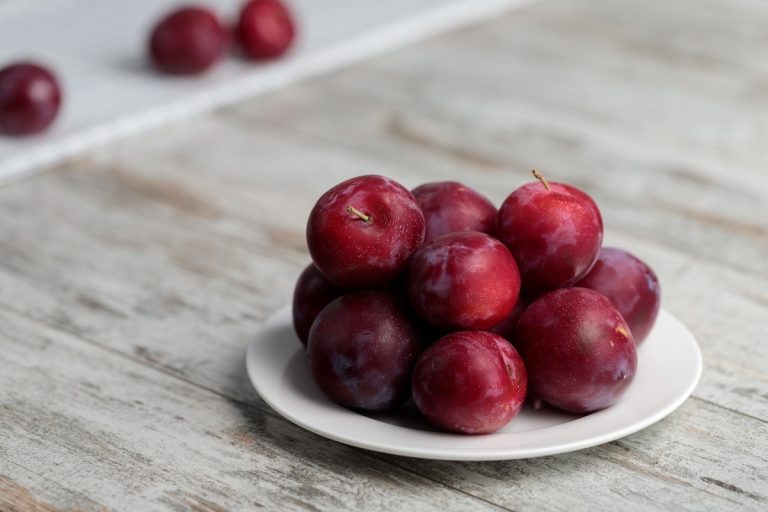Plums are low in calories and very healthy. Because the nutritional values of fresh plums are quite good and make the fruit a healthy snack for the summer.

Plums: calories and all nutritional values
Plums are one of the most popular summer fruits. The elongated, violet plums are ideal for preserving and for various dishes (see below). The calories and nutritional values differ depending on whether the plums are fresh or dried.
Nutritional values for fresh plums:
Calories: 46 calories
Protein: 0.7g
Fat: 0.28g
Carbohydrates: 11.42g
of which sugar: 9.92g
Fiber: 1.4g
Dried plums: nutritional table
Nutritional values for dried plums:
Calories: 240 calories
Protein: 2.18g
Fat: 0.38g
Carbohydrates: 63.88g
of which sugar: 38.13g
Fiber: 7.1g
Plums have significantly fewer calories than, for example, grapes (68 kcal/100g) and also significantly less sugar (grapes: 15.4g/100g). This makes the plums very healthy.
At around 86 percent, plums have a higher water content than other types of fruit. You should take this into account when using it, for example when baking a plum cake. Here it can make sense to pre-bake the base, because the plums lose liquid and the cake base may not rise.

Effect of plums on health
In recent years, scientists have repeatedly examined plums and analyzed their effects on health.
Animal experiments in 2005 proved that dried plums are effective against osteoporosis. However, it is still unclear which ingredients are responsible for this (study).
In plums – especially in dried plums – there are larger amounts of sorbitol. This is the natural sugar alcohol in fructose, which can lead to digestive problems.
Plums contain the messenger substance serotonin, which is also known as the “happiness hormone”. It lifts the mood and ensures well-being.
Scientists have also detected the hormone ghrelin in plums, which is otherwise only produced by animals. It stimulates the appetite – also in humans (study).
In a fairly small study, scientists found that plum juice increased cognitive performance in rats. This effect did not occur with dried plums.



